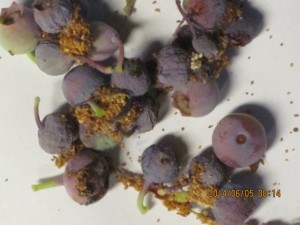Cranberry Fruitworm in Blueberries
go.ncsu.edu/readext?251498
en Español / em Português
El inglés es el idioma de control de esta página. En la medida en que haya algún conflicto entre la traducción al inglés y la traducción, el inglés prevalece.
Al hacer clic en el enlace de traducción se activa un servicio de traducción gratuito para convertir la página al español. Al igual que con cualquier traducción por Internet, la conversión no es sensible al contexto y puede que no traduzca el texto en su significado original. NC State Extension no garantiza la exactitud del texto traducido. Por favor, tenga en cuenta que algunas aplicaciones y/o servicios pueden no funcionar como se espera cuando se traducen.
Português
Inglês é o idioma de controle desta página. Na medida que haja algum conflito entre o texto original em Inglês e a tradução, o Inglês prevalece.
Ao clicar no link de tradução, um serviço gratuito de tradução será ativado para converter a página para o Português. Como em qualquer tradução pela internet, a conversão não é sensivel ao contexto e pode não ocorrer a tradução para o significado orginal. O serviço de Extensão da Carolina do Norte (NC State Extension) não garante a exatidão do texto traduzido. Por favor, observe que algumas funções ou serviços podem não funcionar como esperado após a tradução.
English
English is the controlling language of this page. To the extent there is any conflict between the English text and the translation, English controls.
Clicking on the translation link activates a free translation service to convert the page to Spanish. As with any Internet translation, the conversion is not context-sensitive and may not translate the text to its original meaning. NC State Extension does not guarantee the accuracy of the translated text. Please note that some applications and/or services may not function as expected when translated.
Collapse ▲Biology
The cranberry fruitworm (Acrobasis vaccinii Riley) is common throughout the eastern United States and Canada. It may be found on a variety of small fruits including cranberry, blueberry, and huckleberry. The adults are small, brownish gray moths with a 16-18 mm wingspan (5/8 to 3/4 inch); they are seldom seen because they are active only at night. Larvae are smooth, elongate caterpillars with three pairs of thoracic legs near the head and five pairs of fleshy prolegs along the abdomen. They are usually pale yellow-green in color, but may turn a light pink on the dorsal surface as they mature. Fully grown larvae reach about 15 mm in length (5/8 inch).
Adult moths emerge and mate very early in the spring, about the time blueberry buds start to open. Fully grown larvae drop to the ground and spin silken chambers under blueberry plants. They pass the summer, fall, and most of the winter as larvae inside these hibernacula, then pupate in late January or February. There is usually only one generation per year, although a few individuals may continue to develop and produce a second generation on deerberry (Vaccinium stamineum L.) in July (Neunzig 1972).
Significance and damage
Females lay their eggs on green berries that are just beginning to develop; the oviposition site is usually located near the edge of the calyx cup. First instar larvae hatch in four to five days, burrow into the berry, and feed on the pulp. As larvae grow, they move from berry to berry within a cluster leaving behind a trail of frass (excrement) and silk.
Management
Adult moths of the cranberry fruitworm can monitored using pheromone baited traps. This technique will not provide adequate control by itself, but it helps determine if insecticide applications are necessary and optimize timing.
Larval infestations can be detected by looking for the pin-sized entry hole near the stem of small, shrunken berries that have turned blue. The distinctive frass and webbing produced by this species does not usually appear until the larvae are several weeks old and begin moving between berries.
Biological control
Both egg and larval parasites have been associated with the cranberry fruitworm (Maxwell and Morgan 1951, Neunzig 1972). Phanerotoma franklini is the most common of these species, but it has never been found in densities high enough to provide effective control.
Chemical control
See the North Carolina Agricultural Chemicals Manual for specific management information.
References
- Fulton, B. B. 1946. Dusting blueberries to control the cranberry fruitworm. J. Econ. Entomol. 39: 306-308.
- Neunzig, H. H. 1972. Taxonomy of Acrobasis larvae and pupae in eastern North America (Lepidoptera: Pyralidae). USDA Tech. Bull. 1457. 158 pp.
- Maxwell, C. W., and C. T. Morgan. 1951. Life history studies of the cranberry fruitworm, Mineola vaccinii (Riley), in New Brunswick. Ann. Rep. Entomol. Soc. Ontario. 82: 21-25.
- Tomlinson, W. E. 1962. The response of the cranberry fruitworm to black light. J. Econ. Entomol. 55: 573.
More information
Implementing IPM at the Ideal Track – NC Small Fruit & Specialty Crop IPM



